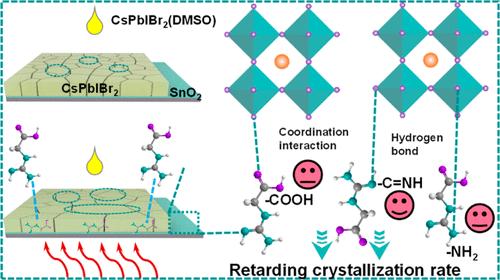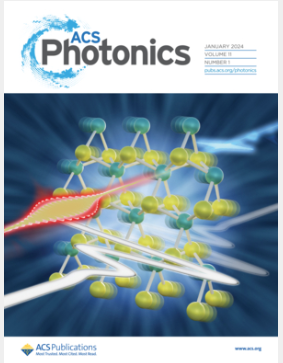Functional Analysis and Instructive Selection of a Green Additive Achieve Dual-Interface Modification for Fabricating Self-Powered, High-Performance Perovskite Photodetectors
IF 6.5
1区 物理与天体物理
Q1 MATERIALS SCIENCE, MULTIDISCIPLINARY
引用次数: 0
Abstract
The guanidine compound has recently been demonstrated to be effective in passivating interface defects and enhancing the performance and stability of perovskite photodetectors (PPDs). However, the selection and utilization of these compounds are conducted without comprehensive guidance due to an insufficient understanding of the mechanisms and functions of their functional groups. Herein, we evaluated the defect passivation capabilities of guanidine acid (Gua) by analyzing its electrostatic potential and molecular orbitals and then applied it at the interface of all-inorganic perovskite and SnO2 films. The smoother morphology, larger crystal, and improved optoelectronic properties of Gua-modified SnO2 and perovskite films demonstrated the effective defect suppressing of Gua. Moreover, systematic experiment and calculation analyses have revealed that the –C═NH group, with a higher electron cloud density, not only plays a dominant role in healing the oxygen vacancies, free hydroxyl groups, and Sn-related defects on the SnO2 surface but also passivates the Pb2+ and X– defects at the perovskite interface. Consequently, the Gua-modified all-inorganic PPDs achieve an exceptional detectivity of 1.32 × 1013 Jones, a responsivity of 0.30 A/W, and a minimal dark current of 1.55 × 10–9 A/cm2. This work provided valuable insights for customizing Lewis base molecules with crucial functional groups and a universal strategy to estimate and select organic molecules for perovskite photoelectronic devices.

绿色添加剂的功能分析和指导性选择实现双界面修饰制备自供电高性能钙钛矿光电探测器
胍类化合物在钝化界面缺陷、提高钙钛矿光电探测器(PPDs)的性能和稳定性方面具有重要作用。然而,由于对其官能团的作用机制和功能认识不足,这些化合物的选择和利用缺乏全面的指导。本文通过分析胍酸(Gua)的静电势和分子轨道来评价其缺陷钝化能力,并将其应用于全无机钙钛矿和SnO2薄膜的界面。Gua修饰的SnO2和钙钛矿薄膜的形貌更光滑,晶体更大,光电性能得到改善,表明Gua有效地抑制了缺陷。此外,系统的实验和计算分析表明,具有较高电子云密度的- c = NH基团不仅在修复SnO2表面的氧空位、游离羟基和sn相关缺陷中起主导作用,而且还钝化了钙钛矿界面上的Pb2+和X -缺陷。结果表明,经gua修饰的全无机ppd具有1.32 × 1013 Jones的探测率、0.30 a /W的响应率和1.55 × 10-9 a /cm2的最小暗电流。这项工作为定制具有关键官能团的路易斯碱分子提供了有价值的见解,并为钙钛矿光电子器件估计和选择有机分子提供了一种通用策略。
本文章由计算机程序翻译,如有差异,请以英文原文为准。
求助全文
约1分钟内获得全文
求助全文
来源期刊

ACS Photonics
NANOSCIENCE & NANOTECHNOLOGY-MATERIALS SCIENCE, MULTIDISCIPLINARY
CiteScore
11.90
自引率
5.70%
发文量
438
审稿时长
2.3 months
期刊介绍:
Published as soon as accepted and summarized in monthly issues, ACS Photonics will publish Research Articles, Letters, Perspectives, and Reviews, to encompass the full scope of published research in this field.
 求助内容:
求助内容: 应助结果提醒方式:
应助结果提醒方式:


